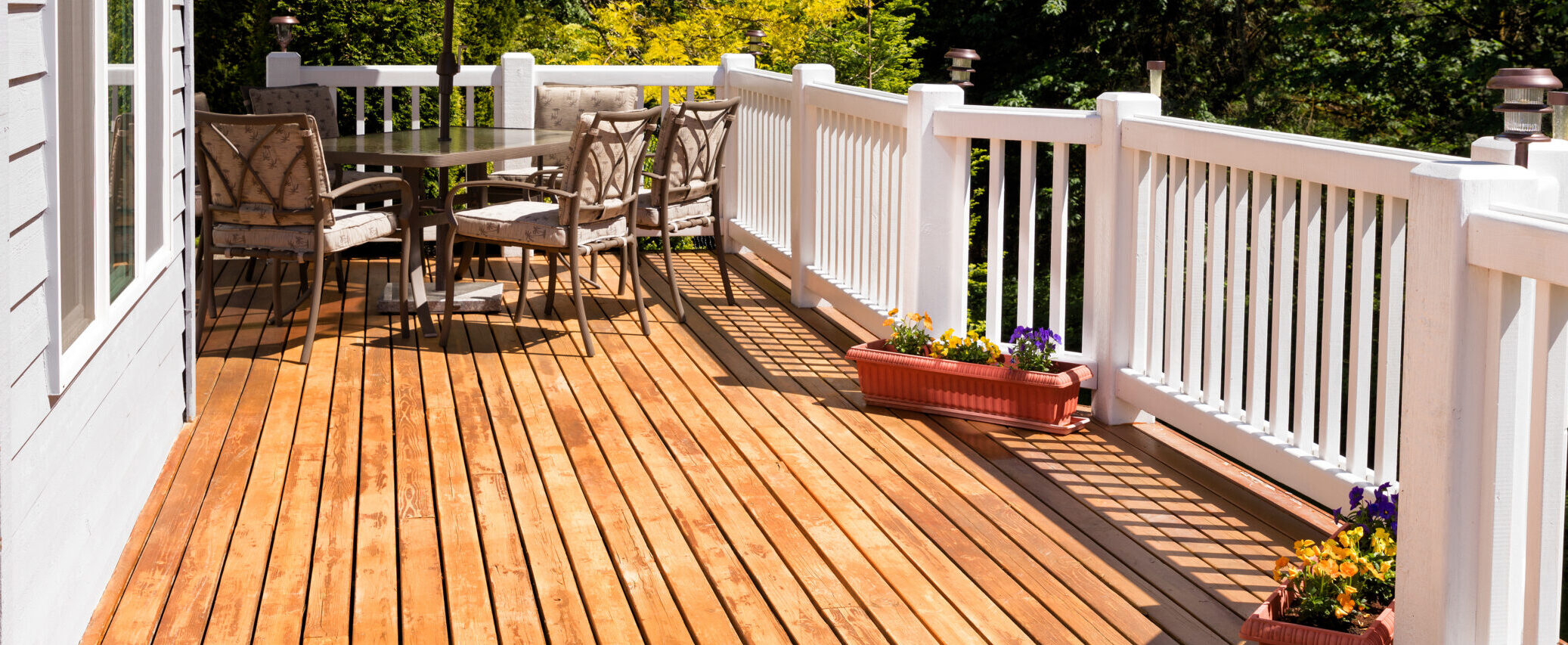HIGHLIGHTS
Program Updates
The AWC to Expand LCA Database With Forest Service Grant
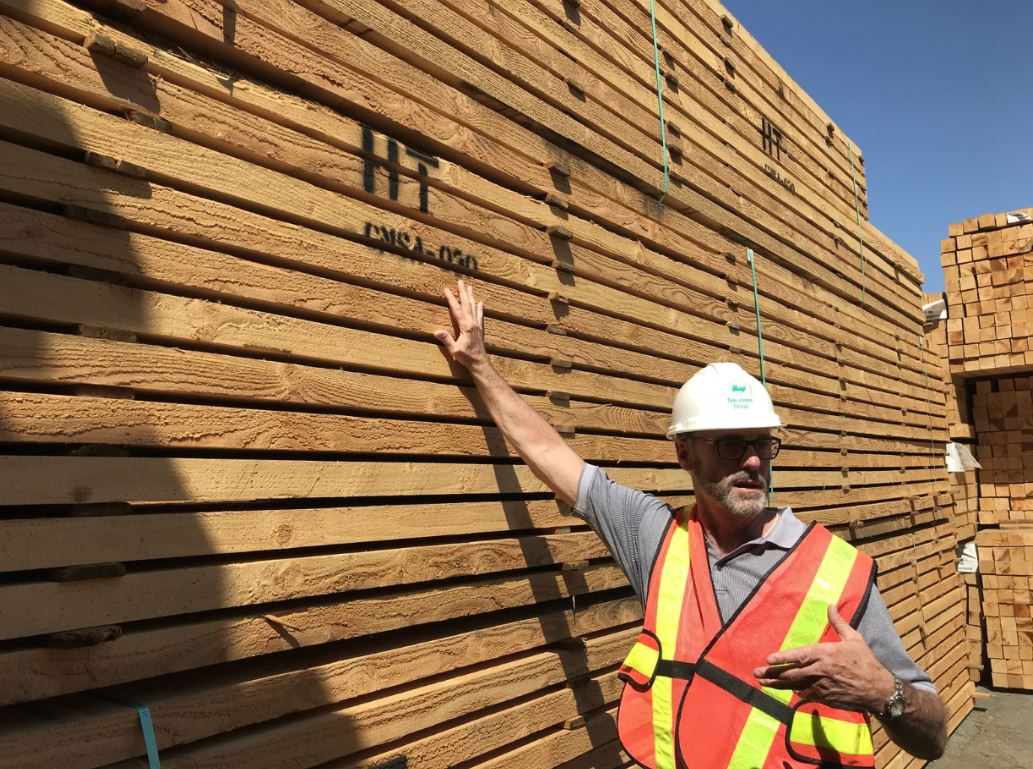
The American Wood Council is set to expand its life cycle assessment database—which collects environmental product declaration (EPD) and fiber sourcing data—to include non-AWC-member manufacturers, without additional costs to these manufacturers.
Adding more manufacturers further boosts the value of the AWC’s Lifecycle Database, particularly as more building material specifiers are looking for EPDs with robust environmental impact data that complies with ISO standards. Demand for such data is expected to grow as more and more design teams look to measure the climate impacts of their buildings.
The AWC’s database will ensure consistent data collection and transparent reporting of environmental impacts, making it easier for supply-chain-specific EPDs to be produced. Overall, this essential tool reinforces the wood industry’s core claims about product sustainability and makes sure carbon accounting concerns don’t disrupt the decision to specify wood products. This valuable enhancement was made possible by a USDA Forest Service Wood Innovations Grant.
The AWC is also gearing up to produce updated EPDs for our industry’s primary products, with the goal of having all EPDs updated before they expire in 2025. The AWC is working closely with the USDA’s Forest Products Laboratory on data quality and coordinating EPD development. FPL will help integrate industry data into federal government databases, such as the LCA Commons database that federal agencies use for procurement purposes. This collaboration is an example of how a commitment to data and transparency can help us tell a stronger story through public sector engagement.
Highlighting Wood’s Essential Role in Building Healing Environments
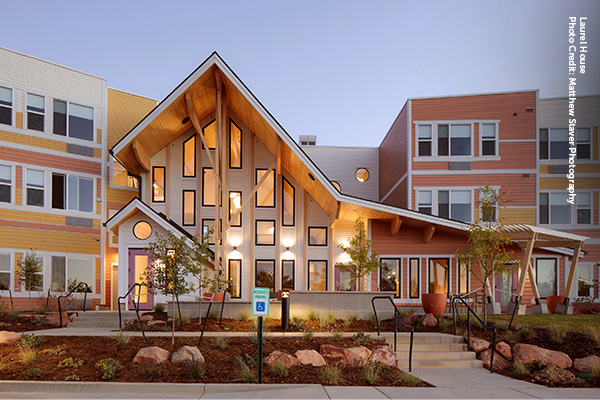
Exposed wood construction and interiors can play an important role in supportive environments and in a relatively new architectural movement known as trauma-informed design, or TID. That’s one of the takeaways from Think Wood’s most recent Studio Spotlight, a series that highlights innovative architecture and design firms pushing the boundaries of what’s possible with wood.
The latest profile features Denver-based architecture firm Shopworks, a leader in TID and an avid advocate for the abundant use of wood. TID recognizes that affordable housing and community buildings can have an important impact on the mental health of their occupants. TID practitioners strive to create physical spaces that promote safety, well-being, and healing. With its correlation to biophilic health benefits, wood is one of the materials of choice recommended by Shopworks when designing to the principles of TID.
The Studio Spotlight features five projects designed to TID guidelines, including PATH (Providence at the Heights) in Aurora, Colorado, a light-frame and mass timber building that supports individuals recently released from incarceration. Shopworks used exposed CLT as walls, posts, and ceiling details to create warm, inviting spaces.
“Using CLT was pretty new and innovative for this type of building,” says Shopworks founder Chad Holtizinger. “The exposed timber creates a warm, welcoming, authentic feel—inside and out—blending the indoor and outdoor experience.”
Alongside wood’s environmental and aesthetic benefits, its impact on creating a sense of well-being in a variety of building types is an important factor for architects to consider in their specification decision. Think Wood is elevating the voices of design industry practitioners advocating for the use of wood to create buildings that have a positive impact on occupants, including those in vulnerable populations.
WoodWorks Expertise Highlighted at World Conference on Timber Engineering
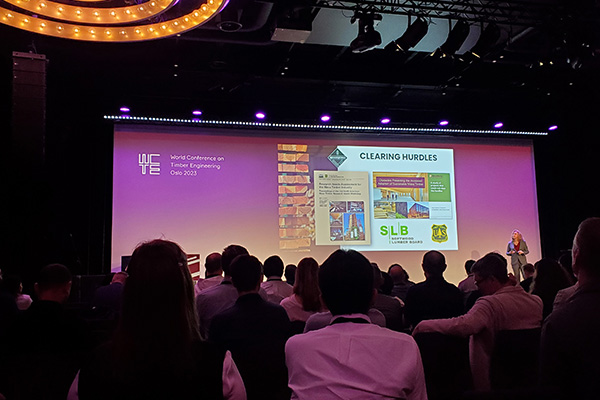
WoodWorks was a notable thought leader at last month’s World Conference on Timber Engineering (WCTE) in Oslo, Norway, with staff members making several presentations and a keynote address. The global conference attracts more than 900 timber industry delegates, scientists, and academics from around the world to discuss engineering research related to the use of wood as a building material.
In a keynote presentation on the first day, “Innovative Engineering for a Sustainable Future,” WoodWorks President and CEO Jennifer Cover described the momentum of mass timber in the United States, which, in just five years, has gone from being a relatively new market to an international leader.
“We’ve had tremendous success already, and these are still early days,” Cover said. “Each year, more than 17,000 buildings that are built in other materials could be constructed in wood under current building codes, significantly improving the sustainability of our built environment.” By comparison, 1,700 mass timber buildings have been constructed or are in design.
WoodWorks COO Bill Parsons also presented on the acceleration of U.S. markets, while Senior Technical Director Ricky McLain spoke on differential material movement in mass timber structures.
The conference also afforded the chance to gather information on the latest research and testing in Europe and elsewhere related to fire, seismic, and other types of building performance, helping to ensure the staff remains up to date on important developments that can be used to assist design and construction professionals in the United States.
In addition to WoodWorks’ presence at the event, SLB President and CEO Cees de Jager and Chief Marketing Officer Ryan Flom attended, capitalizing on the opportunity to meet with global wood association contacts, including leadership of the Forest and Wood Products Australia, in an effort to build relationships and partnerships to leverage best practices and align on common messaging to accelerate the use of wood products. On the same trip, de Jager met with the head of constructsteel, a division of World Steel, to discuss expanded collaboration on steel-timber hybrid promotion.
Texas A&M Students Visit Mill for Firsthand Look at Lumber Production
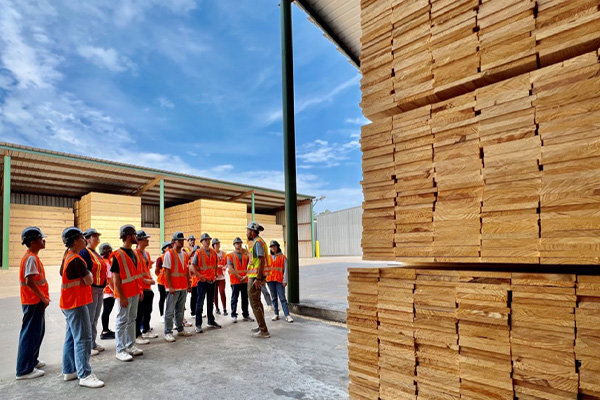
A group of architecture students from Texas A&M’s School of Architecture got a firsthand look at the products they will one day specify. As part of the SLB’s student engagement program, they learned how wood products are manufactured and, importantly, the forest management practices that enable a continuous cycle of growing, harvesting, and replanting.
The visit, which is part of an ongoing effort to help architecture students gain a better understanding of the wood materials that shape our built environment, grew out of continued SLB Education outreach to faculty and students at the school, including sponsoring a lecture from visiting practitioner Jennifer Bonner and a visit from the Think Wood Mobile Tour.
The educational tour began with a visit to Georgia Pacific’s production facility in Pineland, Texas, to observe the various stages of lumber processing and learn about the importance of sustainable practices in the construction industry. This was followed by Steely Lumber in Huntsville, Texas, to see the variety of wood products available and gain a deeper appreciation for the impact of material selection on design. The trip concluded at Sterling Structural’s CLT production facility in Lufkin, Texas, to see the journey of a tree from forest, to mill, and finally to ready-to-install fabrication.
“This particular group of architecture students from Texas A&M led by [Assistant Professor of Architecture] James Tate was by far one of the best and most engaged groups we have ever hosted,” says Steely Lumber Operations Manager Chris deMilliano. “You could tell there was a lot of groundwork established to create excitement regarding wood construction, particularly new products such as CLT and glulam beam advancements.”
The field trip proved to be a transformative experience, allowing these budding architects to connect theory with practice. The students are enrolled in a summer design studio and will be able to incorporate this newfound knowledge and inspiration into classroom designs for wood buildings—and ultimately be able to extrapolate this enthusiasm for wood solutions when they enter professional practice.
Spotlight
Responding to the Housing Shortage: How Wood Could Make America More Affordable
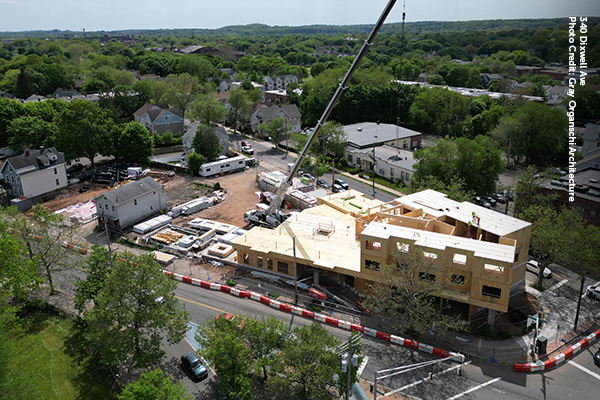
The demand for more affordable housing in America couldn’t be more urgent. The National Low Income Housing Coalition’s 2020 annual report showed that rental rates are out of reach for nearly every worker in the bottom 50% of the national wage distribution.
The New York Times ran a feature story that paints a grim picture for affordable housing, citing that costs for materials and labor remain stubbornly high. Developers are responding by cutting back and reducing the number of affordable apartments on projects that mix affordable and market-rate homes. “It’s the most difficult time I’ve seen in my 30 years in business, a pretty bleak picture,” said Rafael E. Cestero, Chief Executive of the Community Preservation Corporation, a nonprofit affordable housing financier in New York. Rising interest rates and supply chain hiccups are adding to the challenges.
Amid the bad news, there is some reason for optimism: Two bipartisan bills have been introduced in the House of Representatives to create or preserve 1.5 million affordable homes in the next decade. And prefabricated light-frame wood and mass timber systems can offer a boon to developers looking for cost-savings and greater efficiencies when it comes to penciling out more affordable housing, such as these five prototypes.
That was also the finding of a report by Minneapolis-based environmental nonprofit Dovetail Partners and New York City-based development firm Spiritos Properties LLC that explores how offsite mass timber and light-frame wood construction could boost affordability, cut carbon emissions, and speed up construction. The report cites the benefits of wood construction—including the mix of both mass timber and light-frame wood construction—to further improve the delivery of timber buildings up to five stories and provide a solution for timber buildings between six and 12 stories.
Light-frame wood construction coupled with podium structures offers a promising path forward for affordability. Podium buildings consist of multiple stories of light-frame wood construction over one or, in some cases, two levels of concrete podium construction. Because the International Building Code treats podium-style buildings as two separate structures built one on top of the other, this design boosts the number of potential stories developers can build. When designers get creative, they can increase density and find cost-savings with a range of multistory light-frame configurations well suited to market rentals.
From modular light-frame to prefab mass timber, affordable housing can draw on both simple and advanced technologies in wood construction. Innovations in wood buildings are showing that housing solutions don’t have to be bland or bare-bones—curbing costs can come with cutting-edge creativity. Making housing more affordable must go beyond materiality, including efforts to reduce barriers and level the playing field. Wood, with all its flexibility and versatility, has an important role to play in making America more affordable.
Industry Resources
FEA’s Housing Dashboard
Virginia Tech's Monthly Housing Report
This monthly housing commentary report is a free service of Virginia Tech and is intended to help one gauge future business activity in the U.S. housing market.
May 2023 Reports (released in July 2023)
Part A: May Housing Commentary
Part B: May Economic Conditions


